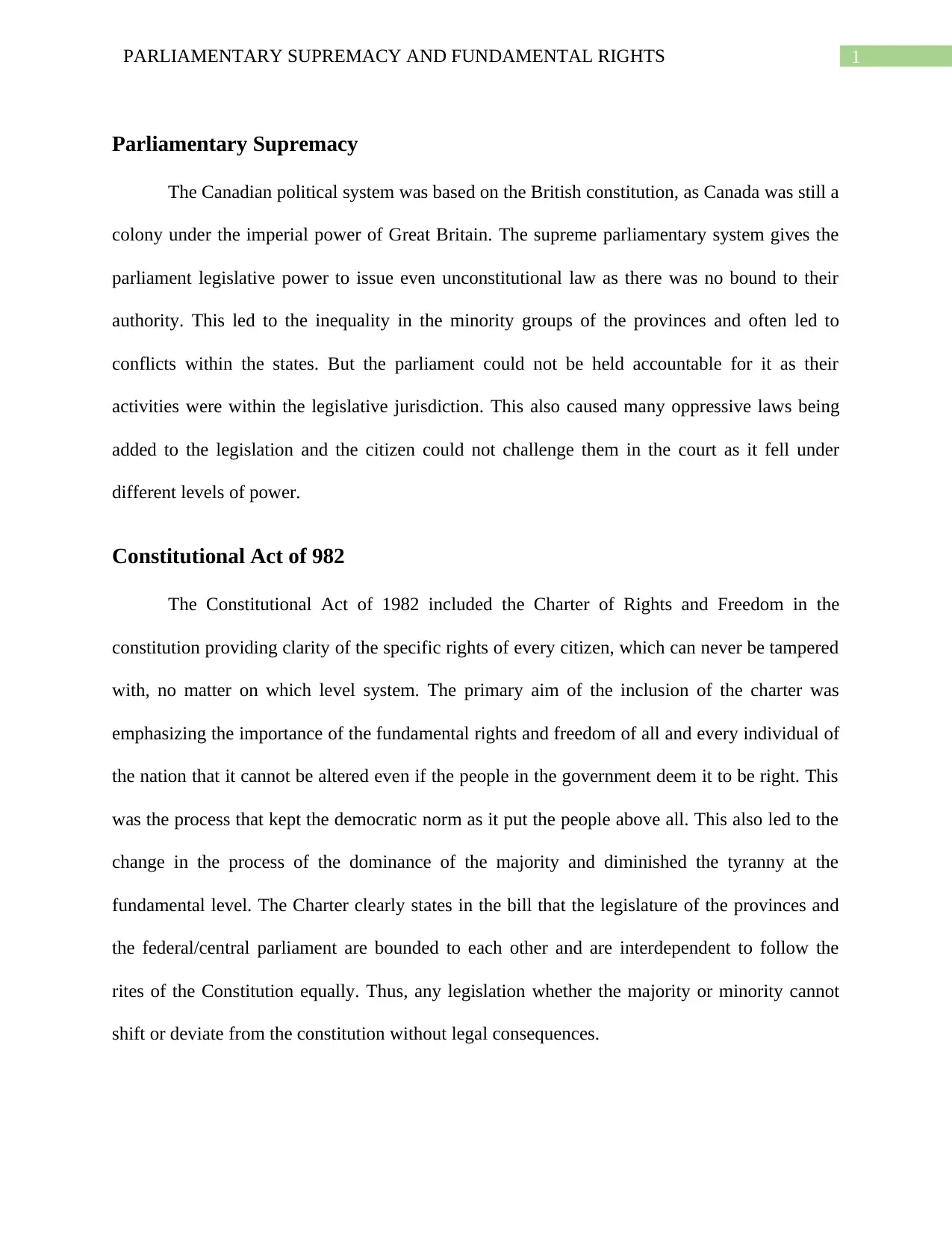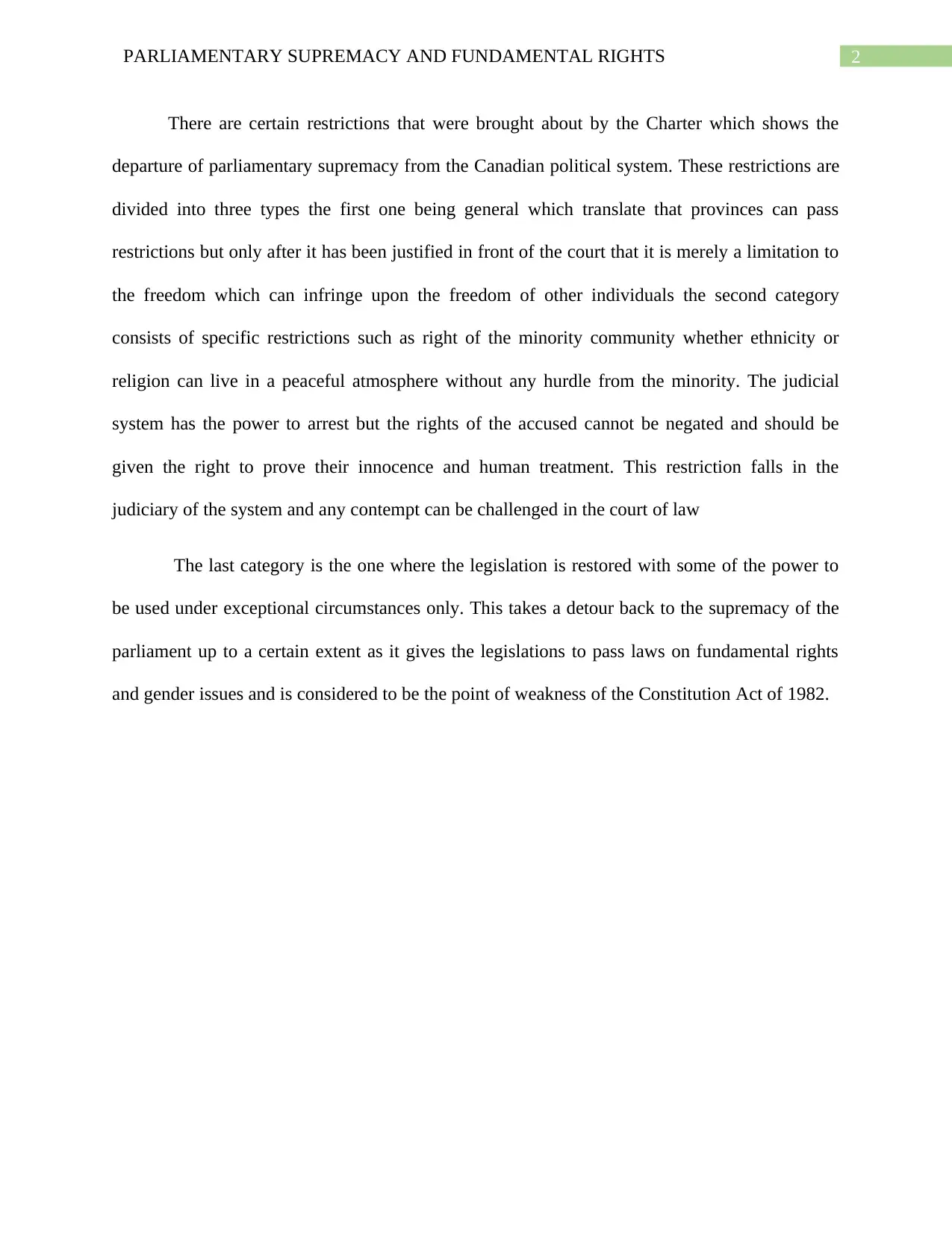The Impact of Parliamentary Supremacy on Fundamental Rights in Canada
VerifiedAdded on 2022/09/12
|2
|551
|23
Report
AI Summary
The report examines parliamentary supremacy and its relationship with fundamental rights within the Canadian political system. It begins by outlining the historical context of parliamentary supremacy, where legislative power resided, and the potential for oppression of minority groups. The report then focuses on the Constitutional Act of 1982 and the Charter of Rights and Freedoms, which introduced specific rights for citizens and limited the scope of parliamentary supremacy. The Charter aimed to protect fundamental rights and freedoms, ensuring they could not be easily altered. The report discusses how the Charter restricts parliamentary power through general and specific limitations, including the protection of minority rights and the judiciary's role. The report also highlights the exceptions to these restrictions, where legislation can pass laws on fundamental rights, reflecting a partial return to parliamentary supremacy. The report concludes by analyzing the impact of these changes on the Canadian political landscape.
1 out of 2








![[object Object]](/_next/static/media/star-bottom.7253800d.svg)